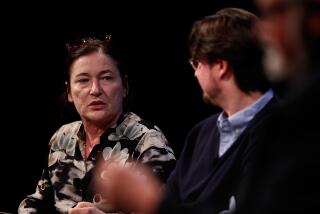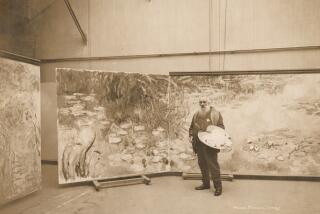biography, autobiography, memoirs : FERLINGHETTI The Artist in His Time<i> By Barry Silesky (Warner Books: $24.95; 294 pp.)</i>
- Share via
Lawrence Ferlinghetti is one of those well-known people whom few people know well. To some extent that’s because Ferlinghetti--poet, publisher, bookseller, novelist--is a private man; although he cooperated with Barry Silesky, himself a poet, on this volume, he clearly dislikes having his beliefs and motivations looked into.
More significant is the fact that Ferlinghetti’s poetry has never received much critical attention; it tends toward the transparent, the everyday, seeing much but revealing little. It’s a surprise, consequently, to learn that his most noted collection, “A Coney Island of the Mind” (New Directions, 1958), has more than a million copies in print worldwide--more than any book by any other living poet, and almost twice as many as Allen Ginsberg’s “Howl”--which Ferlinghetti published two years earlier through his own press, City Lights.
Silesky provides a mild, workmanlike account of Ferlinghetti’s life to date, and though drawing few conclusions, makes it easy to guess at the origins of Ferlinghetti’s sensibility. Dropped off at an orphanage at age 6 because his mother was hospitalized for emotional problems and his great aunt couldn’t afford to rear him, Ferlinghetti ended up the ward of a wealthy, elderly couple in a New York suburb.
The Dickensian echoes don’t end there; in his teens, he was arrested for shoplifting the same month he made Eagle Scout, and, after college, went to sea--joining the Navy, where he captained an escort boat during the D-day invasion of France. Ferlinghetti would return there in 1948, enrolling as a graduate student in the Sorbonne and intending to be a writer of some kind . . . a writer, one projects after reading this book, who took transience for granted, who found the notion of authorial “depth” a luxury.
Silesky doesn’t attempt such amateur psychologizing, which is just as well, considering the dearth of clues that Ferlinghetti gives in his work. One reason, no doubt, that Ferlinghetti was much more popular in the 1960s than he is today--and currently is more respected abroad than at home--is that he writes for readers, not critics, dispensing with subtext and deliberately aiming to be accessible. Another reason is that his poetry--what there is of it, Ferlinghetti now devoting most of his time to painting--is overtly political. Ferlinghetti described himself in “Open Eye, Open Heart” (1973) as a wind-up toy:
someone had dropped wound-up
into a world already
running down....
The verse nicely captures the open, almost sweet dissent of his best poetry. Silesky’s book is above all a tribute to a similarly minded poet, interesting if not particularly enlightening.
More to Read
Sign up for our Book Club newsletter
Get the latest news, events and more from the Los Angeles Times Book Club, and help us get L.A. reading and talking.
You may occasionally receive promotional content from the Los Angeles Times.










